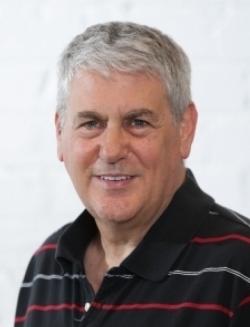Conference Interviews
Speaker Q&A: Gil Amid, chief regulatory affairs officer, Foretellix
Foretellix
 Hear from Gil on Day 1 (August 28) as he presents ‘ODD modeling, scenarios and ODD coverage – safety-driven validation’ during the ‘Key components in the ADAS/AD test and development toolchain’ session.
Hear from Gil on Day 1 (August 28) as he presents ‘ODD modeling, scenarios and ODD coverage – safety-driven validation’ during the ‘Key components in the ADAS/AD test and development toolchain’ session.
What are the top three developments in ADAS/AD technologies you expect to see in the next five years?
Perception: I expect sensor technology to advance and supply better sensing, potentially integrated with external information through V2X. Sensor fusion AI base techniques will evolve to supply larger portion of the software. End-to-end software stacks may grow out of it.
ODDs: Common understanding of ODD specifications and content standards will enable us to focus the development of ADS software and specify its performance.
Convergence to common software architecture of the ADS software stack: The debate between sense-plan-act and end-to-end will be over and there will be an acceptable software stack architecture that will enable supply chains and development.
When do you expect to see full autonomy on US roads? When should we expect commercialization of AV technologies at scale?
This is a purely personal assessment. Commercialization has already started, with Waymo offering paid ride-hail services in a few locations (San Francisco, Phoenix). I expect to see a gradual increase in such services.
I believe the next area to be commercialized will be commercial trucking. I predict we will see a commercial offering within three years. Delivery vehicles may offer commercial service within two to three years, probably in suburban areas.
To discuss ‘full autonomy on US roads’, we need to define what that means. We see Level 4 ADS in operation today in limited areas and we will see trucks within three years.
What are the main three obstacles in the road to full deployment? How can they be overcome?
Cost! For full, large-scale deployment, the cost of ADS and their sensors must come down to a reasonable, affordable level.
Regulatory uncertainty should be considered as an obstacle to full deployment. One significant milestone is expected by end of 2026: a UN regulation and GTR on automated driving systems (ADS Levels 3 and 4 ). Clarity of regulatory requirements will enable increased deployment.
There is a lack of safety metrics, ratings and relations to ODD. There is no set of common metrics to quantify ADS safety performance and to rate the systems against ODD specifications.
What are you speaking about in San Jose and what three messages would you like your audience to take away?
I will speak about safety, scenario-based V&V and ODDs.
The presentation will introduce modeling of ODD (operational design domain) in ASAM OpenScenario DSL 2.1, and incorporating it into safety-driven validation of ADS.
It will present virtual testing, interaction of scenarios and ODD. Specific attention will be given to the challenges of modeling ODDs and validating correct behavior of the ADS within an ODD.
There will be a special focus on an approach to create comprehensive V&V status data, combining all the different testing sources (various virtual testing systems, test tracks and real-world driving).
Three key messages:
ODDs can be formally specified and integrated in V&V.
ODD coverage can be measured and used as one of the quantifiers of safety.
ODD coverage can be aggregated from all testing platform: virtual, track, real-world drivin
